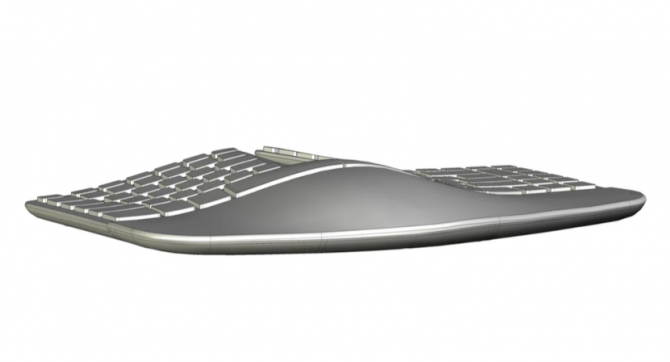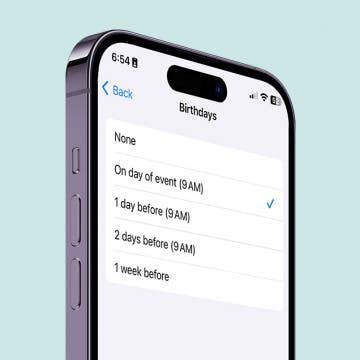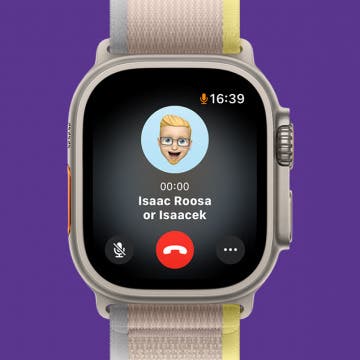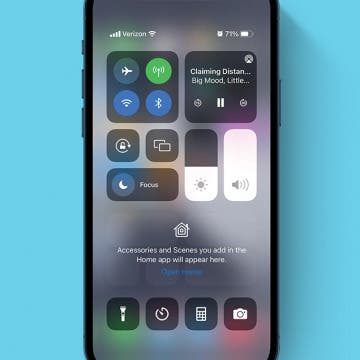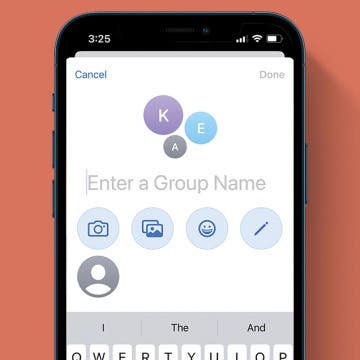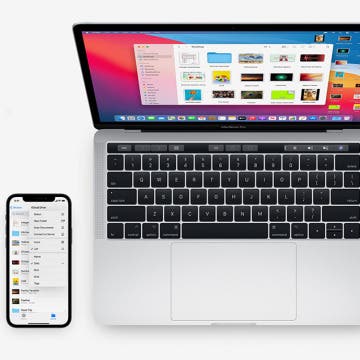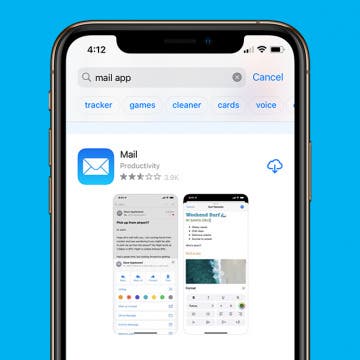This article will be useful for anyone planning to display the output of Keynote on an external screen. I've clearly marked sections meant for advanced users or ones with jailbroken devices; they can be safely skipped by other users. This article contains a lot of information on video/TV output in general and the multitasking/backgrounding JB tweaks, which may also be of interest to readers who aren't Keynote users.
Apple's Keynote app ($9.99) is by far the most widely used iOS application to play back presentations. In this writeup, I present you with a complete discussion of everything related to displaying its contents on an external screen or projector (from now on, for brevity, I'll call TV).

Over at MacRumors, I've been asked to elaborate on the quality of the different technologies and configurations one can use while outputting to external displays from Keynote. Being an engineer and having the necessary (pretty expensive) equipment to properly assess the quality of even high-resolution video signals, I've completed some serious tests never done before to my knowledge to find out how you can present your audience with the best possible image quality.
Unfortunately, Keynote is one of the very few applications to have native support for TV output. This has both advantages and disadvantages over the (with A5+ CPU-based iDevices) standard mirroring. The advantages are as follows:
1) It's supported on practically all (A4+) CPU and cable configurations, meaning you'll be able to show your presentations on an iPad 1, iPhone 4, or iPod touch 4G, even if you only have a composite or component cable. (Of course, the image quality delivered by these two cables, particularly that of the composite one, isn't anything to write home about.) With mirrored-only output, only A5+ devices and only the HDMI and the VGA adapters would work – no A4 CPU's and no composite/component cables;
Note that:
a) Keynote doesn't seem to support (composite/component) TV out on pre-A4 but sill iOS6-compliant devices like the iPhone 3GS, while it does support these low-resolution cables on later iDevice models;
b) Wireless output via the Apple TV is only supported on iDevices with A5+ CPU's but not earlier ones. That is, don't expect a, say, iPad 1 to be able to show a presentation wirelessly over the Apple TV – you can only used wired output with these A4-based iDevices.
2) The output resolution is fully independent of that of the device it's played on. This means even an iPhone 4S, equipped with a 960x640 screen, can output Full HD (1920x1080) when used with the HDMI or the VGA adapters. With A4 devices (iPad 1, iPhone 4 or iPod touch 4G), the maximal resolution is 720p (HDMI adapters) and XGA (VGA adapter). (As usual, the composite/component cables are only capable of lower resolutions – 480p/576p or 480i/576i using the component/composite cables, respectively.);
3) The TV output can be entirely different than the one on the originating iDevice's actual screen output. This means you can display the current time or even presenter notes locally, which won't be seen by your audience.
However, you cannot just switch to another program to quickly look up something without the audience seeing it on an A5+ (that is, by default, mirroring-enabled) iDevice or without the TV output getting black (on A4 devices, that is, where there's no OS mirroring). This can only be circumvented on jailbroken iDevices – see next bullet;
4) On jailbroken devices, the app can even be sent in the background with the slideshow continuing – and, with Apple's own “Keynote Remote”, even remaining controllable. This is the subject of Section 1.1 below.
The main disadvantage is as follows: as with many other apps in the AppStore (or in iOS itself, see for example my report on the pretty bad TV out results of the built-in Photos app and Apple's $4.99 iPhoto HERE), the TV out support isn't properly tested / debugged, resulting in major resolution problems with everything Microsoft Office-based. Actually, the achievable resolution, even with the HDMI and VGA adapters, is far-far inferior to that of even the iPhone 5's mirroring mode, let alone iPads and only a little bit better than with the composite / component cables. This is a MAJOR problem, to which an entire chapter (“2. Problems With Microsoft Office Files”) is devoted below.
Another problem is Apple not making overscan optional in any of its apps. Unfortunately, Keynote isn't an exception. Your only hope is having a way of wiring up your iDevice to the TV with a connection type where overscan is automatically switched off: VGA or, if you're lucky, HDMI-to-DVI. Please consult THIS tutorial for more info.
1.1 Playing Back Presentations In Background
(This section is only relevant to people with jailbroken iDevices. If yours isn't, feel free to skip right to Section 1.2 "Any Differences Between Source Devices?”.)
As with all other iOS apps with native TV output, Keynote also stops outputting when sent to the background by pressing the Home button. (This also applies by the Apple TV's natively playing back an embedded video in full screen – see section “4. Full-screen Playback With the Apple TV”) This makes it impossible to, say, quickly look up a note by pausing the presentation without the mirrored operating system screen to be shown to your audience - assuming you use an A5+ device with, by default, enabled mirroring and with the HDMI/VGA adapters or the Apple TV; on previous devices or with the composite / component cables, a black screen will be shown. This isn't necessarily what you'd prefer – you might want to keep your OS screen or other notes to yourself and not to your public.
This in no way can be fixed unless you jailbreak.
On jailbroken devices, you can install tweaks that allow for Keynote's continuing to work when backgrounded. On iPads with iOS versions prior to iOS6, you have even two: the commercial and absolutely excellent Quasar and the free Backgrounder. (The latter is also compatible with non-iPads and even the earliest operating systems. Note that there won't be TV output with OS versions prior to 3.2.) With any iDevice running iOS6, you have only one choice: the (fortunately, pretty inexpensive) Background Manager.
All these three tweaks (I've tested them all) work just fine with Apple's own Keynote Remote (Universal;$1) when Keynote is backgrounded on the linked and connected-to iDevice. The following screenshot shows it running on my iPt4G, linked to two iPads and being connected to the first:
1.1.1 iOS 6: Background Manager ($1)
This brand new and absolutely excellent tweak allows for doing the same as the very similar “Backgrounder” did in iOS versions prior to iOS6: when pressing the “Home” button, the app will run as before. With apps with TV out support like Keynote, this means the title will continue outputting its content to the TV. Again, if you use Keynote Remote you'll be able to control the slideshow even when it's in the background.
Main Cydia page
Configuring it is pretty simple:
1) go to Background Manager > Each App in Settings:
(as with all screenshots below, tap / click them for the large-sized original versons)
2) tap Add Item:
3) select Keynote:
4) Keynote appears in the list below Each App, with an “N” suffix (annotated below):
“N” means Background Manager uses the native backgrounding of Keynote when you press the Home button. This is the default for everything and, with Keynote, absolutely useless in our cases (as it doesn't support background running at all). Therefore, we'll need to force Keynote to "Background" (in pre-iOS6 parlance, “Forced”) mode. Tap Keynote in the above list and select “Background” in the uppermost “Background Mode” list:
(For (ex-)users of the pre-iOS6 Backgrounder, this “Background” mode is the same as “Forced” mode in Backgrounder, “Native” being the same in both tweaks.)
Also see my posts HERE for more info & my posts on the subject. I've posted a LOT of additional info there on every aspects of multitasking - not only on using multimedia apps, but also disabling for example Mail and Safari from being kept in memory. I also recommend THIS and THIS posts.
1.1.2 Prior to iOS 6
1.1.2.1 (iPad only!) Quasar
This screenshot, in addition to showing I've purchased this tweak, also shows the developer explains everything is run in the background.
No special settings need to be done with Quasar – it'll keep everything running in the background, even if you tap the “Close” icon in the lower left corner of the window:
1.1.2.2 Backgrounder
This free and excellent tool, as has already been mentioned, runs on everything pre-iOS6, not only on iOS5 iPads. As opposed to Quasar, it doesn't support windowing.
Setting it up is done in exactly the same way as with the iOS6+-only Background Manager – basically, the entire menu structure is the same. There is only one major difference between the two tweaks (iOS compability and price aside): it, by default, defaults to “Forced” (in Background Manager's terminology, “Background”) backgrounding, unlike Background Manager. With the latter, the Background Manager > Global menu will show the following by default:
Also note that, unlike with Background Manager, Backgrounder isn't configured from the system-level Settings app but it has its own icon on the SpringBoard.
This is why you'll need to do a bit more to properly configure it.
It's configured for forced background mode, with two exceptions (Mail and Safari). The forced mode is shown in the following screenshot (in the Global main menu):
Basically, if it's only Keynote (and/or a handful of apps) that you want to run in the background while accessing the TV output, you'll want to change this to “Native”:
After this, don't forget to add Keynote with Forced mode: Overrides > Add and select Keynote in the list.
Then, select Keynote from the Overrides main menu (below, I've also annotated the “Add” icon you need to tap in the previous step):
and tap Forced:
1.2 Any Differences Between Source Devices?
I've mentioned Apple's own, stock Photos and $4.99 iPhoto application as ones also suffering from some major, TV out-specific problems (entire article). The biggest problem of those apps isn't present with Keynote, fortunately. That is, as opposed to Photos and iPhoto, you can conduct your presentation from any kind of device – there won't be much quality difference, assuming the connection is at least comparable. (That is, don't expect the composite or the component (RGB) cable to deliver as good image quality as the HDMI or VGA adapters.)
However! There is a major problem I've discovered – that of the PPT (presentation) files created by any kind of Microsoft Outlook. No matter what technology (iDevice and connection type) you use, they'll look plain awful on the external screen. This is, as has already been mentioned above, the single biggest problem with the current iOS version (1.7.2) of Keynote.
The image quality differences—assuming material is created in either the Mac or the iOS version of Keynote—are directly related to the iDevice model and the connection type you use.
That is:
a) As is evident to readers of my previous TV out-related articles, for the best results (where you absolutely must deliver the best image quality at Full HD resolution), you will want to go for the first-generation 30-pin (non-Lightning) HDMI adapter. As has been explained HERE, the second-generation 30-pin HDMI adapter delivers somewhat worse image quality (IQ for short) in every case. So does the 30-pin VGA adapter in some (but not every!) cases. The Lightning adapters (both the HDMI and VGA ones) deliver definitely worse image quality. Even worse is that of the Apple TV, even that of the 3rd generation. Finally, the two standard-definition connection cables (composite and RGB) deliver way-way worse IQ;
b) A5+-based devices should be preferred to A4-based iDevices (iPad 1, iPhone 4 and iPod touch 4G). The latter only deliver 720p or XGA maximal resolution over the HDMI and VGA, respectively. This won't be a problem if you only have an XGA or a, God forbid, SVGA (800x600) projector. With Full HD (1920x1080) or UXGA (1600x1200) ones – or even with SXGA (1280x1024) ones! -, the quality difference will be pretty much visible;
c) If possible, stay away from both Lightning-based and Apple TV-based solutions. If a wired connection and using an “old” iDevice aren't problems, use them – again, preferably with the first-gen HDMI adapter or, if the projector doesn't have HDMI or DVI(-D) input, a VGA one. Incidentally, speaking of DVI(-D): as I've explained HERE in section “1.2.3.2 Driving the DVI(-D) Input via HDMI (if Present)”, you can directly connect the HDMI output of your iDevices to DVI(-D) inputs on projectors when present. As only a passive converter is needed for this, no IQ degradation will occur, as opposed to active conversion like that of HDMI -> VGA (digital-to-analog);
d) don't forget: if you use the Apple TV and wireless image beaming to the TV because you prefer keeping the signal source in your hands, you may want to go for Apple's own, inexpensive ($0.99) Keynote Remote (also see Section 1.1), assuming the resolution of your projector is over SXGA and you have the necessary high-IQ adapter type to connect to it (preferably a 30-pin first-gen HDMI or, in worse case, Lightning ones. The latter will still deliver better IQ than wireless connections to the ATV). Then, you can just leave the iDevice wired to the projector and control your presentation from another iDevice – wirelessly. The best of the two worlds: excellent IQ not otherwise achievable with the ATV and still being wirelessly connected. Of course, you'll need two iDevices for this but even the oldest iDevice models like the iPhone 3GS will work just fine as a remote. (I've tested this too.)
1.3 So, You Want to See Some Examples Proving I'm Right?
(This section is technical. Non-techies may want to skip straight to Section “2. Problems With Microsoft Office Files”.)
I've created a set of examples proving the accuracy of everything I've stated:
- A5+-based devices are preferable to A4-based ones;
- HDMI / VGA adapters are preferable to the composite/component cables;
- 30-pin adapters are preferable to the latest Lightning ones;
- the first-generation 30-pin HDMI is preferable to the second-generation HDMI and;
- high-quality wired connections are preferable to wireless connections to the Apple TV.
I also show you the relative IQ of different iDevices' (iPad 1, 2, 3, 4, iPhone 4, 4S, 5) output, some with more than one connection type.
The full screengrabs and their crops all show our old friend, the ISO 12233 resolution chart. I've created a natively 16:9 presentation in the desktop (OS X) Keynote and dragged a 8000x4500 pixel version of the reschart (the original PNG file is HERE; alternative link) to it, filling the entire slide. The resulting presentation is HERE. I've imported the file into the client Keynote running on iOS and captured the HDMI output with a 1080p30-capable frame grabber.
Let's see the results in the order of the above bulleted list!
1.3.1 A4 vs. A5+
The iPad 1, iPhone 4 and iPod touch 4G are all capable of making use both (first- and second-gen) HDMI adapters and the VGA one, in addition to the standard-definition, “old” composite / RGB cables. Let's see their IQ in the best possible case, that is, using the first-generation HDMI adapter for output.
(As with most my ISO 12233 shots, I only provide a small, zoomed-in crop of the entire chart as an inline image. Click the picture for the full-sized (here, 720p) original!)
If you compare this zoomed-in image crop to the ones of best image quality (30-pin first-gen HDMI adapters in an A5+ device; for example, the iPad 3), you'll see it's of definitely worse image quality because of the lower resolution (720p vs. 1080p).
1.3.2 HDMI / VGA (High-Definition adapters) vs. composite / component (Standard-Definition cables)
The component cable delivers the following IQ in PAL mode and without enabling Widescreen mode (both configurable on the iDevice's Settings):
Note that, here, I've provided a different cropping area from the other crops in this roundup simply because it's much easier to see the 4/3 times better vertical resolution when enabling widescreen mode using this crop.
The widescreen mode (enable it in Settings > General > TV Out > Widescreen) works in exactly the same way as movies, DVD's or SD DVB broadcasts use the anamorphic mode: they enhance the vertical resolution by simply throwing away the upper/lowermost parts of the image, assuming only the inner 16/9 area contains information. That is, the same source information is downsized to 576 (in NTSC mode, 480) rows instead of 576 / (4/3) = 432 rows, hence the vertical resolution increase. This is perfectly visible in the following crop (pay special attention to the horizontal lines' individual visibility – as you can see, they can be counted even after the “5” sign, unlike in the above crop):
All in all, should you need to use an old connection type (because, say, you've forgotten to take the HDMI adapter with you and only have standard-def cables) when connecting to a widescreen projector, if the input presentation contains 16:9 slides, make sure you enable widescreen mode, it'll increase the vertical resolution! (Don't forget to enable horizontal stretching in the projector too! Otherwise, it may not notice the video signal being anamorphic, that is, widescreen!)
Should you keep the video signal standard on NTSC, the overall resolution will be somewhat worse in both dimensions, as can also be seen in THIS framegrab. Therefore, only enable NTSC mode when you output to old NTSC-only CRT TV's or you absolutely need to output at 59.94 fps and not 50.
1.3.3 30-pin vs. Lightning
Unfortunately, as has been pointed out in several of my past articles, the new Lightning adapters at high resolutions deliver definitely worse IQ than the old, high-quality 30-pin ones. Just compare this framegrab (crop) to that of the first-gen 30-pin HDMI adapter – or, even the second-generation one! The difference is certainly visible.
iPhone 5 output over the Lightning adapter (HW revision 1.0.0, FW version 6.1.0). The iPad 4 and iPad mini deliver exactly the same results.
The image of the Lightning output is less contrasty (see for example the darker blackground), has visible compression artifacts (particularly around the numbers) and has visibly less resolution. Unfortunately, in addition to having 80-100ms lag, this is the major problem with the new Lightning-HDMI/VGA adapters and won't likely to go away either with (possible) Lightning firmware updates for the reasons I've discussed to death HERE. It just can't – downscaling 1080p to 900p, compressing it, sending the compressed signal over the Lightning bus and decompressing it will always introduce both IQ and lag problems, no matter how hard Apple's engineers try to fine-tune the algorithm. Not even the best engineers can beat the laws of physics / electronics (finite CPU en/decoding power, bandwidth etc.).
1.3.4 The two 30-pin HDMI adapters: first-generation vs. second-generation
While I've already provided you with some proofs of the first-generation 30-pin HDMI adapter delivering superior IQ to the faster-but-otherwise-worse second-generation (and current) one (see section “1.1.2 Blind test” HERE), new, Keynote-specific results are in order.
This is the output of the IQ-wise superior first-generation HDMI adapter:
And this is that of the somewhat inferior second-generation one:
While the IQ difference isn't as big as with the Lightning or the A4 cases (let alone the old, standard-definition cables), it can easily be spotted in areas where the “bleeding” of the brightness signal results in a major decrease in contrast; most importantly, the close-to-one-pixel-checkerboard area under number “9”. The originally white areas of the reschart are rendered as grey.
The effects of the brightness bleeding aren't so evident elsewhere.
1.3.5 Wireless Apple TV (AirPlay) vs. wired connections
Should you want to use the Apple TV, you can expect image quality as mediocre as with the Lightning adapters (see 1.3.4):
Note that streaming your presentation through the ATV is the only way to get rid of the stupid “windowboxes” around the picture, unless you can use cabling disabling it automatically (DVI or VGA). After disabling the by default enabled overscan, the image resolution becomes definitely better. After all, the system “only” scales down the originally 1080p image to 720p and not to 720p-10%.
Unfortunately, the video compression artifacts and the other problems mostly visible with fast-moving images (but not with static ones) stay.
Again, you do NOT want to use the Apple TV if, using other technologies (e.g., first-generation 30-pin HDMI cables) you could deliver much superior IQ to your audience because both the source iDevice and the target projector are capable of full HD resolution. This is particularly true if you also have embedded videos in your presentation (see Section “4. Full-screen Playback With the Apple TV”), except when you're ready to follow my mini-tutorial on making those videos play back in fullscreen and natively by the ATV.
So, all in all, we've seen the achievable image quality using all of the available configurations and technologies. Now, let's go on to the question, which, I bet, even Apple is unaware of (I don't think they would have released such a half-baked, buggy product, had they known about the bug): the sub-par TV out quality of anything Microsoft PowerPoint-based. Basically, if you display an originally PowerPoint-based presentation (even after a pre-conversion in the OS X version of Keynote), the image quality will be absolutely awful.
2. Problems With Microsoft Office Files
Unfortunately, Keynote, as of the current version, has some major problems with rendering presentations originating from Microsoft's PowerPoint – that is, the de facto presentation creation app.
I've tested this all with both the Mac version of Office 2011 and the PC version of Office 2010. The test files are HERE and HERE for Office 2011 for Mac and Office 2010 for PC, respectively. Basically, they are exactly the same as the original file, already linked above, I've created in the desktop Keynote – that is, it only has one 16:9 slide, filled entirely by the resolution chart.
Basically, on an A5+ 30-pin device with the first-gen HDMI adapter (that is, under absolutely the best circumstances – no Lightning, no ATV, no 720p-only-A4, no second-generation HDMI adapter), you'll see this when rendering these files on an external TV:
An iPad 4 shot (other Lightning-based devices would result in the same image):

It's only the (already bad-quality) RGB that won't be significantly worse than in the non-Microsoft case. That is, it's only in this case (you can only present your presentation using the RGB or the composite cables) that you shouldn't find a way to, somehow, recreate the presentation or find another way of presenting it (e.g., not switching to slideshow mode at all and only showing your slides in edit mode, with all the problems this has).
RGB, PAL mode, non-widescreen mode (same crop as above):
RGB, PAL mode, widescreen mode with additional stretching applied by the framegrabber:
2.1.1 Yes, The Difference is Certainly Staggering in Full HD, But What About Lower Resolutions?
You may (rightfully) ask whether lower-resolution external TV's are affected by the Microsoft problem. After all, in business environments (unlike in home ones), still XGA or SXGA 4:3 projectors are the norm and not significantly higher-resolution 16:9 Full HD ones.
Unfortunately, they are. Here's how an SXGA (1280x1024) LCD monitor renders the same (Microsoft PPT) slide when driven via the VGA input:

And this is how the native Keynote-created file is rendered:
As you can see, even at SXGA resolutions the image quality difference is HUGE.
2.1.2 Adding New Pages to a Office-Created Document
Note that this affects every kind of material in Office-originated presentations – not only inline images, but also simple text. Also, if you add a new slide to such a document right on your iDevice, this particular page will also be rendered at low resolution.
This is how a simple “Ggggffff” title is rendered on the external screen when added to a PowerPoint created by Office 2011 for Mac as a new slide:
And this is a new page added to a native, Mac-based Keynote file:
2.2 What About Files Converted With Desktop Keynote?
Unfortunately, they suffer from exactly the same problem. The Keynote conversion of the Office 2011 for Mac source file (again, the original is HERE) exhibits exactly the same problem. The converted file is HERE, should you want to play with it.
That is, you can't even trust the desktop Keynote to properly convert your files in a format that will be rendered in full resolution on an external TV.
2.3 How Come Apple Haven't Noticed This?
Probably because, on the internal screen, MS Office PPT's render just fine and in high resolution. There is absolutely no difference between the resolution of Office-based and Keynote-based presentation when shown onscreen on a sufficiently high-resolution screen (e.g., Retina iPads).
HERE is an iPad 3/4 (Retina) screenshot of the Office 2011 for Mac file and HERE is that of the native Keynote one. As you can easily see, there's absolutely no difference in the resolution on the internal screen, unlike on the external one.
Even before switching to native TV output, the (still) mirrored TV output is full-resolution:
As has already been mentioned, external screen support has always been a stepchild of iOS development. This is why so many apps suffer from major TV out bugs – for example, Gameloft's Dungeon Hunter 4, Pangea's Bugdom 2 and Cro-Mag Rally; Sky Gamblers - Rise Of Glory; FIFA 12 etc. (More info in my forthcoming “Encyclopedia of Games with Native TV Out Support”, where I explain the TV out bugs of these apps.)
2.4 How Come My Retina iPad Screen Shows Low-Res Images with Even True Keynote Docs?
When outputting to an external monitor, you'll see the following on your screen, independent on the input file's creator app:
That is, you won't be able to instantly see, based only on the local rendition of the slide, whether you're displaying a document affected by the bug or not. However, of course, in no time will you be able to differentiate between the “good” and the “bad” resolution on the external TV, the resolution difference is so huuuuge. (Except for, of course, driving the TV though the old, standard-definition RGB / composite cables, as has already been mentioned.)
3. Making Full Use of the Available Screen Estate
If you know at least the aspect ratio of the projector at the time you prepare your presentation, you can easily create a material fully making use of the available screen estate. That is, if you basically target a 4:3 projector and nothing else, you'll want to use 4:3 slides so that the content, when shown, won't be letterboxed. That is, there won't be a large black area over the top and under the bottom of the picture.
In both cases, you'll also save yourself from having to crop (either the leftmost/rightmost area or the top/bottom) or stretch in one dimension.
However, there may be cases when all you have is a pre-created file with a given aspect ratio not targeting your current projector. Should it be the “traditional” 4:3 one, while you have a widescreen projector or monitor, unless you crop or stretch, a large area of the available screen estate won't be used. In the particular case of showing your presentation through an Apple TV, you can help the situation with some additional work if and only if you have embedded videos in your presentation. This, in addition to not only allowing for making use of the full(!) screen estate, also allows for playing back with the highest framerate and quality possible.
4. Full-screen Video Playback With the Apple TV
Presentations can have embedded videos. As you may recall, in my past articles dedicated to the Apple TV (for example my XBMC + AirPlay one), I've emphasized you'll always want to make use of its native video decoding / playback capabilities instead of decoding and rendering the video on the iDevice and trying to pass this decoded content verbatim to the Apple TV. The image quality and framerate difference is staggering. The same (to a lesser degree) is true with the new Lightning (that is, non-30-pin) HDMI / VGA adapters, which, when rendering the direct output of the iDevice, deliver definitely inferior image quality than in the case when they play back the video files themselves, just like Apple TV in its native video playback mode.
On the desktop (in Keynote), I've created a 4:3 presentation, into which I've directly embedded the following:
- the first, fourth and last slide just contain numbers
- the second and third contain the ISO 12233 reschart in both filling the entire 4:3 slide (only showing the 4:3 part of the reschart) and by applying letterboxing to fit the 16:9 original inside the 4:3 slide (third slide)
- the fifth one contains a title (“welcome my video:”) and the 60fps counter video. (The video's original is HERE)
(The Keynote file is HERE – feel free to download and try yourself.)
Unfortunately, Keynote has absolutely no support for playing back a 16:9 video on a 16:9 external screen full-sized, instead of playing it just embedded in the slide. The only exception is showing the file through the Apple TV – with some manual work.
Basically, you can only make an embedded video fullscreen and natively decoded by an external decoder when NOT in mirroring mode. This, unfortunately, is only possible with wireless AirPlay connections. That is, it's only with AirPlay that you can explicitly disable mirroring. You, unfortunately, cannot do the same with the Lightning adapters, which, image quality-wise, would also benefit a lot from external video decoding.
Unfortunately, when you disable mirroring via AirPlay, apps just querying [[UIScreen screens] count] won't even notice there's a second screen attached to the iDevice (the above property will have the value of 1), unlike with wired connections, when they will (it'll have 2). This is why they won't use it for programmatic (native, non-mirrored) output. Keynote is no exception. This, in layman's terms, means if you don't enable AirPlay mirroring in the operating system, there won't be any output when trying to show a slide without an embedded video. However, as soon as the slideshow (either manually or automatically) gets to a slide with an embedded video, the ATV will automatically play it back – in fullscreen and the original quality.
This all means it IS possible to play back embedded videos in Keynote presentations over AirPlay connections if you do as follows:
- enable AirPlay mirroring before starting the presentation
- show the “static” (non-multimedia) slides to your audience using Keynote's built-in TV out support
- before moving to a slide with a built-in video clip (assuming you want to present it fullscreen and in maximal quality), quickly disable AirPlay mirroring - but leave the iDevice connected to the ATV.
- now, move to the slide with the embedded video. It'll be played back by the ATV in full screen, framerate, resolution and quality.
- after the video has finished playing, re-enable mirroring so that the next “static” slides can be shown.
I've created a demo video showing all of this:
Note that, to help you see the Apple TV3 plays back video at indeed 60 fps when decoding it natively and in no way goes over 30 fps when doing this over wireless AirPlay, I've shot this video at 720p60 and slowed it down by a factor of two so that every single frame is preserved and not get rid of by YouTube.
At 0:09, I enable AirPlay mirroring, which is, again, needed for the entire presentation to be shown on the external screen.
At 0:21, I start the presentation. After this, I advance through the first four slides. Note that embedded 16:9 images aren't displayed fullscreen. Also note that I haven't disabled by the, by default, enabled overscan on the ATV under Settings > Audio & Video > Adjust For AirPlay Overscan. This is why the image has thick borders (windowboxing).
It's at 0:45 that the counter video starts. If you advance through the frames one-by-one, you'll see that the external screen only shows it at 30 fps because of the wireless AirPlay restrictions.
I stop AirPlay mirroring-based video playback at 0:53 and advance to the final slide.
At 1:10, I disable AirPlay mirroring on the iPad but, of course, I don't disconnect from the ATV. Then, I restart the presentation from Slide 1 at 1:20. As you can see, these non-video slides aren't shown on the external screen – again, they require AirPlay mirroring to be active.
At 1:35, when I advance to the fifth slide, the ATV's output changes: it starts loading the video and automatically starts it. It plays the video back in fullscreen, without windowboxing (if overscan is left enabled as is the case here) and at full framerate, that is, 60 fps.
At 2:33, I switch back to mirrored mode to continue showing the other slides.
UPDATE (May/30/2013 21:43GMT): the just-released 0.99-10 version of Background Manager changed the "Background" mode name to "Forced". That is, it now uses the same terminology as the pre-iOS6 Backgrounder. That is, all occurrences of the “Background” mode name in the above article should be “Forced” from now on. This also means the sentence “Therefore, we'll need to force Keynote to "Background" (in pre-iOS6 parlance, “Forced”) mode.” should now simply read as “Therefore, we'll need to force Keynote to "Forced” mode.”
I've posted a quick report on my test results of the new version to http://forums.macrumors.com/showpost.php?p=17332989&postcount=71 – it's worth checking out if you want to know what's changed.


